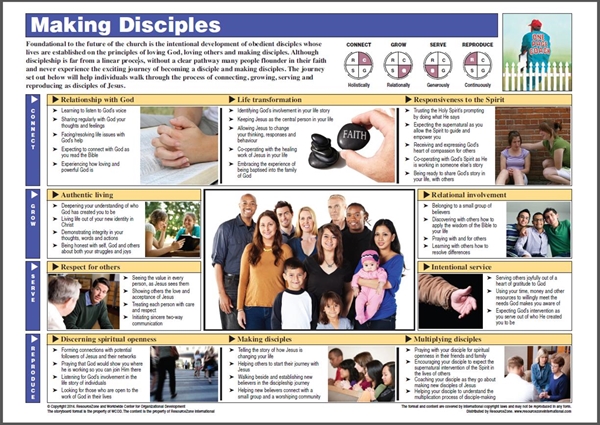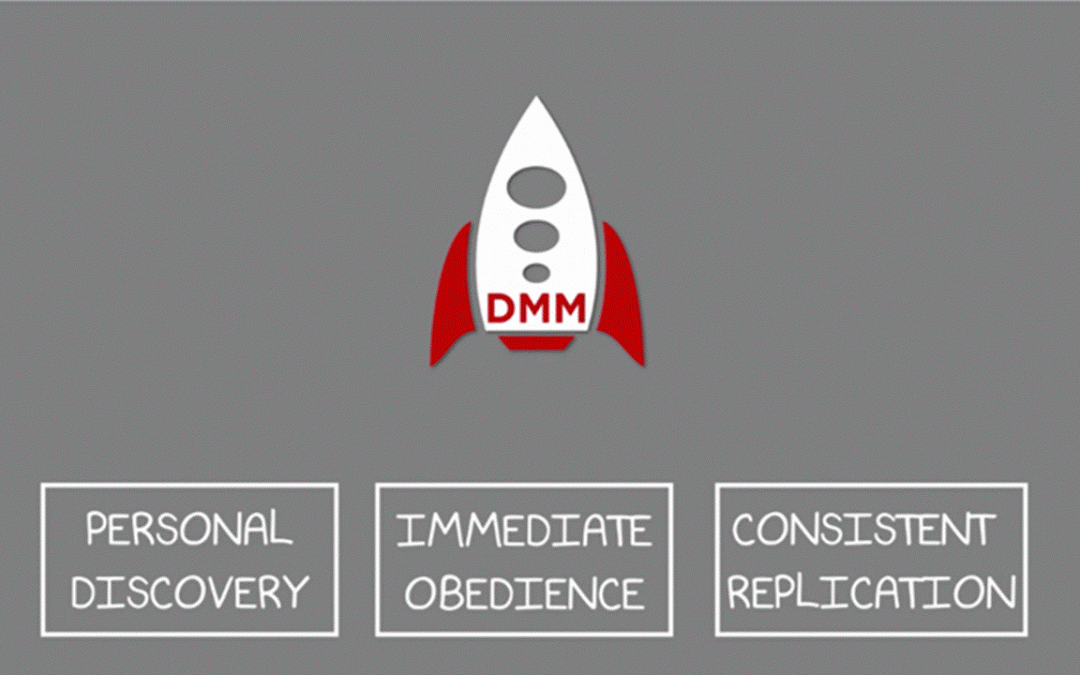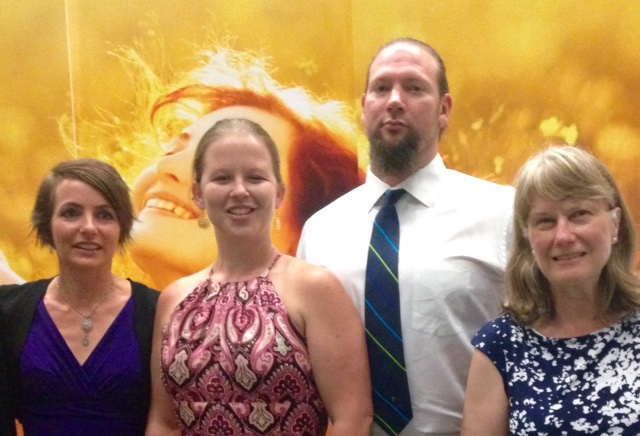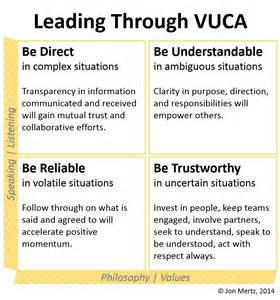
by Gary Reinecke | Aug 8, 2016 | Church Growth, Church Multiplication, Disciplemaking |
The organic vs. linear conversation about making disciples continues.
Organic, or highly relational approaches work. Linear, or programmatic approaches work. Church planters and pastors make disciples in a way that is effective in their context. You make disciples in your way.
One approach does not fit all.
When leaders know the process of disciplemaking they realize that, as long as the goal is clear and behavioral milestones are established; they can personalize their approach. By the process, I mean, the essential behaviors of a maturing disciple e.g. broadly defined as loving God, loving your neighbor and making disciples. In practice, they blend the organic with the linear.
For instance, one leader that experienced the tension between an organic and linear approach discovered a happy medium with a very simple strategy that requires a discipleship coach, to guide emerging disciples through the phases of maturity e.g. connecting, growing, serving and reproducing. He has contextualized a strategy so that it incorporates the essentials of disciplemaking using the Making Disciples storyboard (seen above) as the framework. The storyboard describes the process of a maturing disciple.
Here are some ways disciplemaking coaches use the Making Disciples storyboard in a coaching relationship:
- Assessing: Where are you in your journey?
- Clarifying: What’s next on your journey?
- Evaluating: How are you doing in this area of your journey?
- Brainstorming: What can you do to grow in this area to keep moving forward in your journey?
- Confirming: What will you do to continue your journey?
Connecting leaders with tools to make more and better disciples is a passion. Take a closer look at the Disciplemaking tools to see if this helps you refine your process. Please share what has worked for you below so that we can learn from each other.

by Gary Reinecke | Aug 1, 2016 | Uncategorized |
For the last year, I’ve been learning about Disciple Making Movements (DMM). The model comes under a variety of names like Training 4 Trainers (T4T) and Life Transformation Groups (LTG); but the goal is the same = disciples making disciples. Many leaders and mission agencies have applied the approach and adapt it to their context. My contribution has been developing leaders in the strategic skiils of coaching.
Three core practices drive DMM.
Personal Discovery: Discovery (inductive) Bible Study is used to guide the self-discovery process.
Immediate Obedience: Through the discovery Bible study participants are challenged to identify an action step they can take in the following week to apply what they learn.
Consistent Replication: Reproduction is the fruit of the discipleship process, multiplying into the third and fourth generation.
Here are three questions to assist you in creating a similar process in your context:
- What are the bare essentials to make disciples?
- What obstacles are hindering disciples from making disciples?
- How can you simplify the disciple-making process to reproduce into the third and fourth generations?
For more information, view the Discipleship Making Movements video.

by Gary Reinecke | Jul 24, 2016 | Church Multiplication, Disciplemaking, Leader Development |
I am passionate about learning and studying other disciplines in society. Then extract the principles to apply to life and ministry. Here is an example from the arena of health coaching with questions to ask yourself to enhance the way you reproduce disciples and leaders.
My wife Gina is a health coach. She helps people “lose it” every day. She works for a company committed to leadership development that provides training combined with mentoring relationships. In the photo above you see four generations of health coaches beginning with Gina (far left). Each person has experienced the process of gaining optimal health by participating in a simple, reproducible program.
Following is a timeline of their development:
- Generation #1: Gina (in 24 Gina empowered the next generation & reproduced herself)
- Generation #2: Susan (far right – 16 months until Susan reproduced)
- Generation #3: Rebecca (second from left – 4 months until Rebecca reproduced)
- Generation #4: Mike (in process)
This is what I observed from Gina’s experience:
The first generation took more time to acquire the skills and pass those onto the second generation. But once the second generation experienced the way “the program” works, it took less time because they had sifted through the essentials to pass on to the next generation. Through that sifting process, the third generation took far less time to reproduce.
Here are some questions that might help you reflect on your disciplemaking and leadership development process.
- What non-essentials get in the way of making disciples or developing leaders?
- What steps are missing that would enhance what you are doing?
- How can you accelerate the process of reproducing disciples and leaders into the 3rd and 4th generation?
One insight I leave with from this experience is the importance of laying a solid foundation with the right DNA from the very beginning. Another insight is the value of solid training and support. When the 1st. generation reproduces into the 2nd., 3rd. and 4th. generations; they will resemble the 1st. generation. Finally, when the right DNA is in the seed, then the fruit of reproduction is multiplication!

by Gary Reinecke | Jul 15, 2016 | Church Growth, Church Multiplication, Coach Training, Disciplemaking, Focused Ministry, Leader Development |
VUCA is gaining traction in the coaching world and certainly has application to the world of coaching church planters, pastors and network leaders. The notion of VUCA was introduced by the U.S. Army War College to describe the more Volatile, Uncertain, Complex and Ambigious multilateral world which resulted from the end of the Cold War.
The best VUCA leaders are characterized by change-agent skills, a clearly defined change process and an intimate understanding of how to manage change.
The dynamics of change individually and corporately can be complex but with care, the process can be managed in a positive manner.
As a family we are preparing for our oldest to leave home and attend university this fall. This will be our first. If you have gone through this, perhaps you can relate – we are riding a steep learning curve. We, Gina and I, are learning to be very intentional to make sure our son is anticipating the benefits and challenges for his new found freedom. At the same time, managing the emotions on the home front.
Healthy small groups experience this dynamic when they release leaders to start-up new groups. We are going through these growing pains right now as our small group is sending off 50% of our group to join our church’s first new church plant. Our response – to celebrate the work of God in our community, have a party for the missionaries that we are sending-off and prepare for the next one.
Churches that plant churches experience similar emotional responses when they release their first daughter church. Churches that get through this first pregnancy and deliver a healthy baby become more adapt at future births. But the same emotional responses occur to varying degrees: denial, anger, bargaining, depression testing and acceptance.
One resource that I use in coaching leaders in managing change is the Change Management Skill Builder. This resource offers a brief yet concise understanding the way change works with a simple 6-step response:
- Involve
- Inform
- Initiate
- Implement
- Review.
See if the Change Management Skill Builder helps you sharpen your Change Management Skills.

by Gary Reinecke | Jul 11, 2016 | Church Growth, Disciplemaking |
VUCA is gaining traction in the coaching world and certainly has application to the world of coaching church planters, pastors and network leaders. The notion of VUCA was introduced by the U.S. Army War College to describe the more Volatile, Uncertain, Complex and Ambiguous multilateral world which resulted from the end of the Cold War.
Previously, I discussed how to Coach VUCA. To take VUCA from diagnosing to action requires a different framework. Today I will flip the framework to coach on leadership “agilitly” so that leaders can take action to navigate change effectively (see diagram above).
While coaching a newly established pastor in a new congregation to enhance their small group ministry I asked the question: “What is the state of your current small groups?” This question led to a number of insights about the health of the groups, fruitfulness, purpose, model, support and training, etc. This assessment gave him a realistic view of what he had to work with.
As he explored the future of their current small groups, it was apparent what he could expect. People would be cared for, lives would be impacted and about 20% of the congregation would assimilate into a group over the course of a 12-month cycle. Dissatisfied with those outcomes, he was led to prayerfully consider the “best case scenario” for small group environments where “life” was the primary goal. From that place he envisioned disciplemaking communities where personal and community transformation took place. The values shifted from assimilation to disciplemaking, meeting for the purpose of meeting to service in the community and maintaining group participation to growth through evangelism.
The point of the VUCA model is that the more a leader knows about a situation and, the better able the leader is to predict the potential impact of the actions proposed; the more capable the leader becomes at navigating change.
Regarding the pastor and his small group vision. With a clearer sense of WHAT IS and the necessary RIGHT ACTIONS – the better able the church has become at incorporating the vision for small group ministry.
Once a vision is clarified then the following key questions are helpful when coaching a leader to Lead Through VUCA.
Vulnerability: Be Reliable
- What promises do you need to keep in this situation?
Uncertainty: Be Trustworthy
- How can you engage people?
Complexity: Be Direct
- What information do people need to have?
Ambiguity: Be Understandable
- What is the most compelling manner to articulate your vision?
As you coach leaders, this simple framework will be very familiar. See if these questions help you raise your effectiveness as you coach leaders who initiate bold new visions to make more and better disciples. Please submit questions below that you have used to help leaders, Lead Through VUCA.




